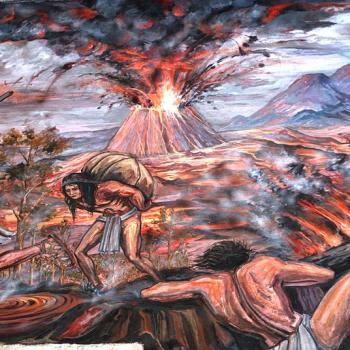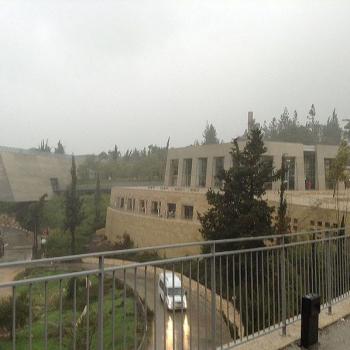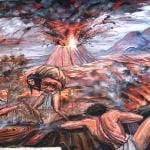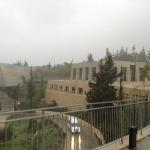
(Wikimedia Commons public domain)
Martin Tanner and I will have Dr. Stanford Carmack as our guest this evening on the Interpreter Radio Show during its first hour (7-8 PM). During the second hour (8-9 PM), Martin and I will discuss Alma 23-29.
The Interpreter Radio Show can be heard Sunday evenings from 7 to 9 PM (MDT), on K-TALK, AM 1640, or you can listen live on the Internet at ktalkmedia.com.
In the meantime, here are a couple of items from John W. Welch, et al., eds. Knowing Why: 137 Evidences That the Book of Mormon Is True (American Fork: Covenant Communications, 2017):
The unusual name Anti-Nephi-Lehi has perplexed Book of Mormon readers, especially in trying to make sense of the presence of Anti– in this name. It often causes confusion, because anti- looks like the Greek preposition commonly used today to mean “opposed to; against.”
In light of the context, it would not make sense for these recent converts to declare themselves to be against Nephi and Lehi. Alternatively, if the name element Anti– derives from the Egyptian relative adjective nty, which means “the one who,” “that,” or “which,” then the name would mean just the opposite — roughly, “that-which(-is-of-)Nephi-Lehi” or “the-one-who(-is-of-)Nephi-Lehi.” (303)
Here is the relevant discussion in the online Book of Mormon Onomasticon:
https://onoma.lib.byu.edu/index.php/ANTI-NEPHI-LEHI
As an Arabist, though, I need to reply to the Onomasticon‘s treatment of عند (‘inda), which does not mean “opposite.” Rather, it means “near” or “at” (e.g., ‘inda al-baab “by the door” or “at the door”). It can also mean “to have,” as in ‘indak kitaab? (“Do you have book?”). I’ve sometimes wondered, accordingly, whether ‘inda might be related to the -ondi- in Adam-ondi-Ahman, which might then mean something like “Adam in the Presence of Ahman.” And might Anti-Nephi-Lehi mean approximately “With Nephi and Lehi”? Of course, if ‘inda really is, as the Onomasticon suggests, unattested in any Semitic language other than Arabic and perhaps even a loanword from Greek, that would seem to make it a less likely contributor in this case.
See:
“Anti-Nephi-Lehi,” Book of Mormon Onomasticon, ed. Paul Y. Hoskisson.
Royal Skousen, Analysis of Textual Variants of the Book of Mormon: Part 4, Alma 21–55 (Provo, UT: FARMS, 2007), 2091–2095.
Stephen D. Ricks, “Anti-Nephi-Lehies,” in Book of Mormon Reference Companion, ed. Dennis L. Largey (Salt Lake City, UT: Deseret Book, 2003), 67–68.
***
As explained by Latter-day Saint scholars Stephen D. Ricks and Matthew L. Bowen, the name Jershon and the attending detail that it was a land of “inheritance” for the Anti-Nephi-Lehies is a fairly straightforward Hebrew pun. The Hebrew verb yrsh (pronounced yarash) means “to take possession of” or “to inherit.” The nominal form (morashah/morash, “possession”) of this root is specifically used to describe the land of promise: “And I will bring you in unto the land, concerning the which I did swear to give it to Abraham, to Isaac, and to Jacob; and I will give it you for an heritage [morashah]: I am the LORD!” (Exodus 6:8).
The Hebrew letter yod (y) is typically rendered in English with a J, as in the names Jehovah (YHWH or Yahweh) and Jerusalem (yerushalaim). Combining yrsh with the element –on (which in Hebrew toponymy may designate a place or location) would easily render the name Jershon: “place of possession/inheritance.” Quite literally, then, Alma 27 depicts the Anti-Nephi-Lehies “inheriting” or “taking possession” of the “place of possession/inheritance.” (310-311)
See:
https://knowhy.bookofmormoncentral.org/knowhy/why-was-jershon-called-a-land-of-inheritance
Matthew L. Bowen, “‘They Were Moved with Compassion’ (Alma 27:4; 53:13): Toponymic Wordplay on Zarahemla and Jershon,” Interpreter: A Journal of Mormon Scripture 18 (2016): 233–253.
Stephen D. Ricks, “A Nickname and a Slam Dunk: Notes on the Book of Mormon Names Zeezrom and Jershon,” Interpreter: A Journal of Mormon Scripture 8 (2014): 191–194.
Stephen D. Ricks and John A. Tvedtnes, “Notes and Communications: The Hebrew Origin of Some Book of Mormon Place Names,” Journal of Book of Mormon Studies 6, no. 2 (1997): 255–59.












